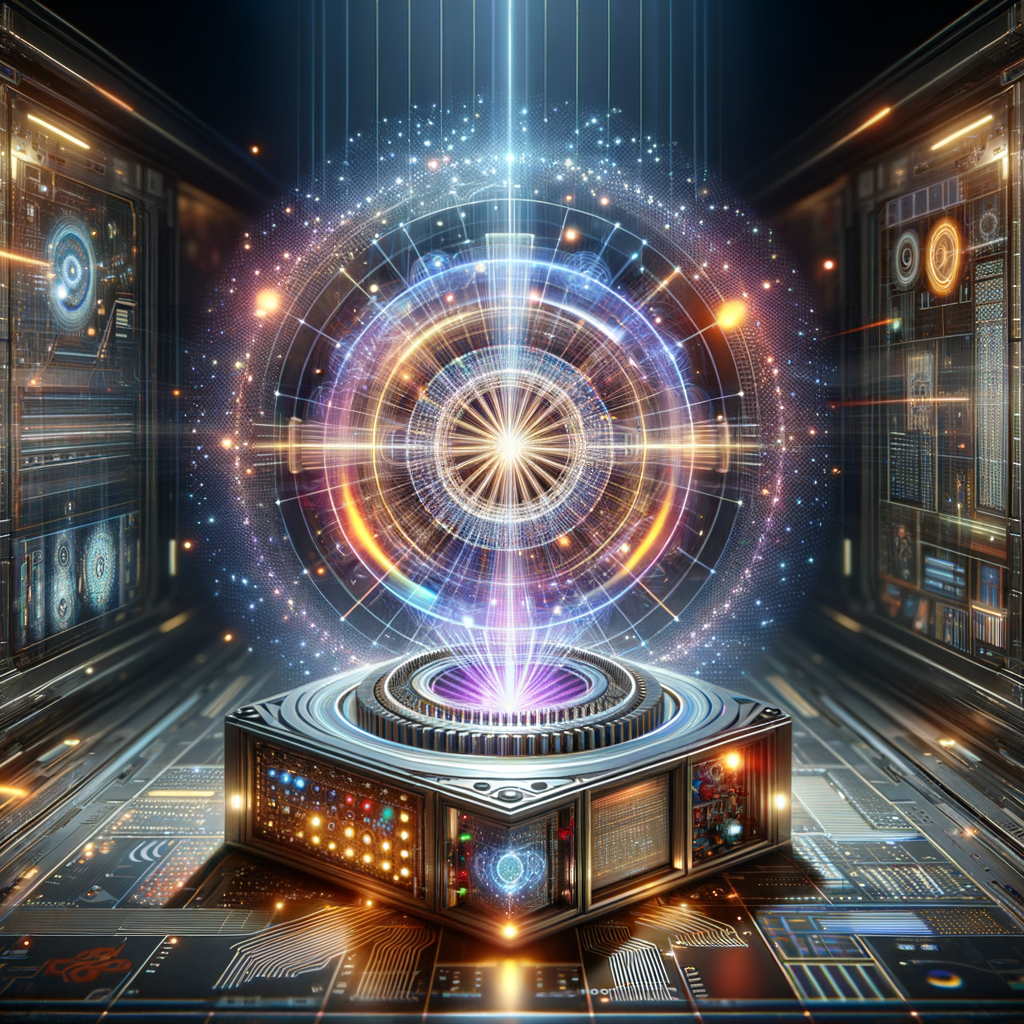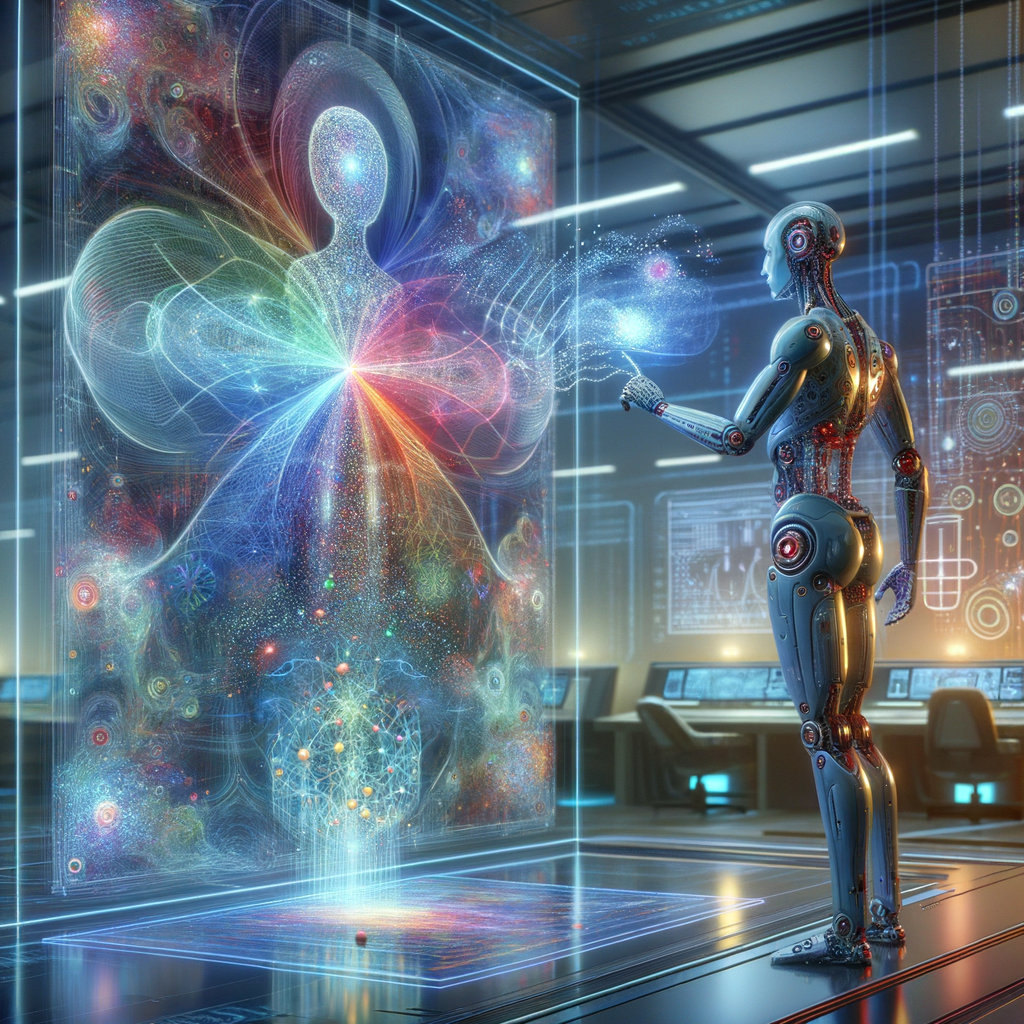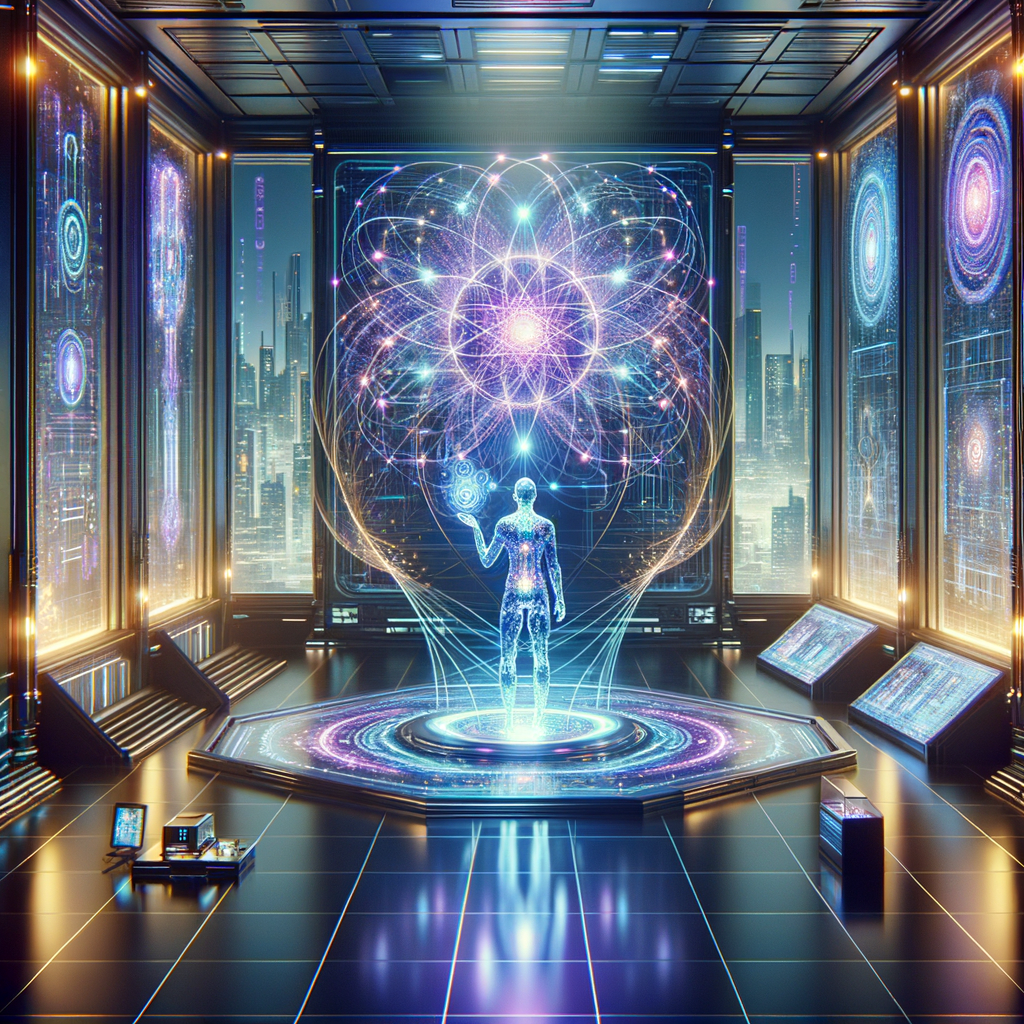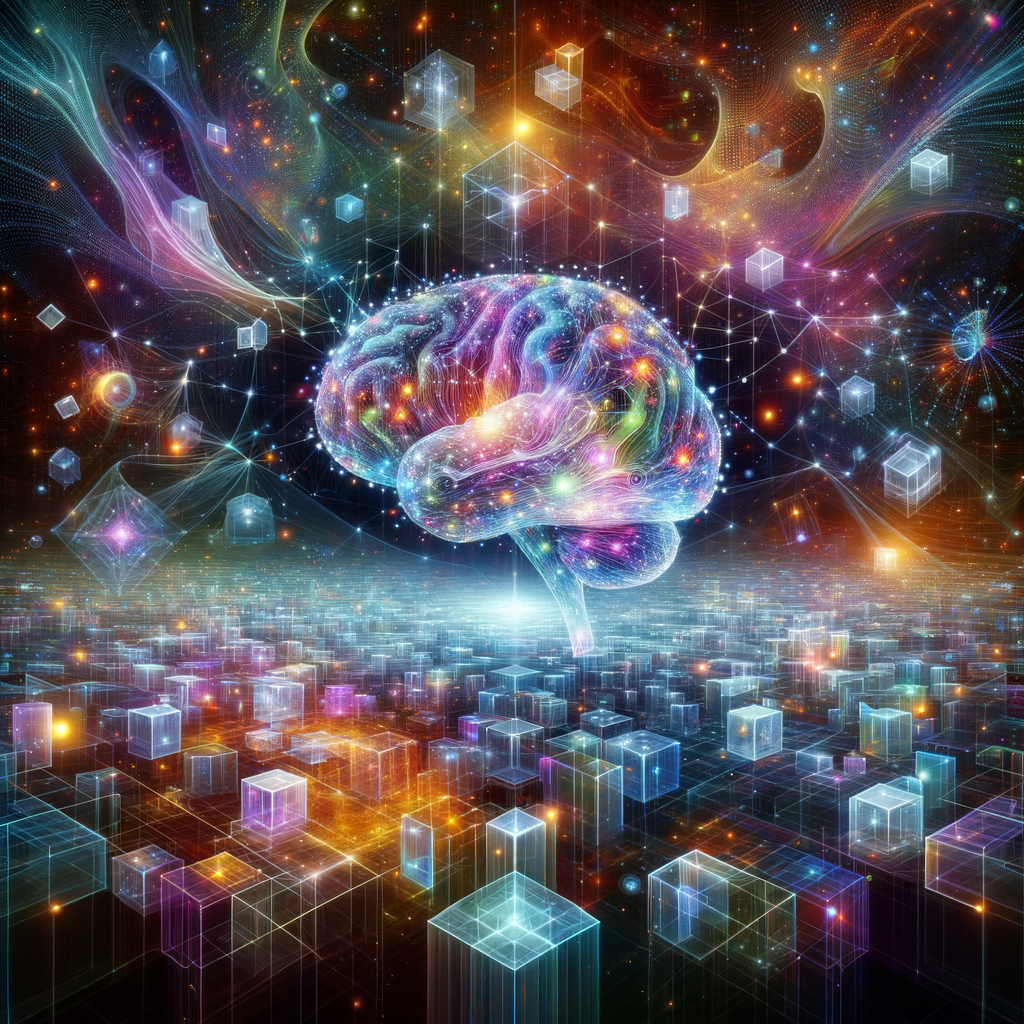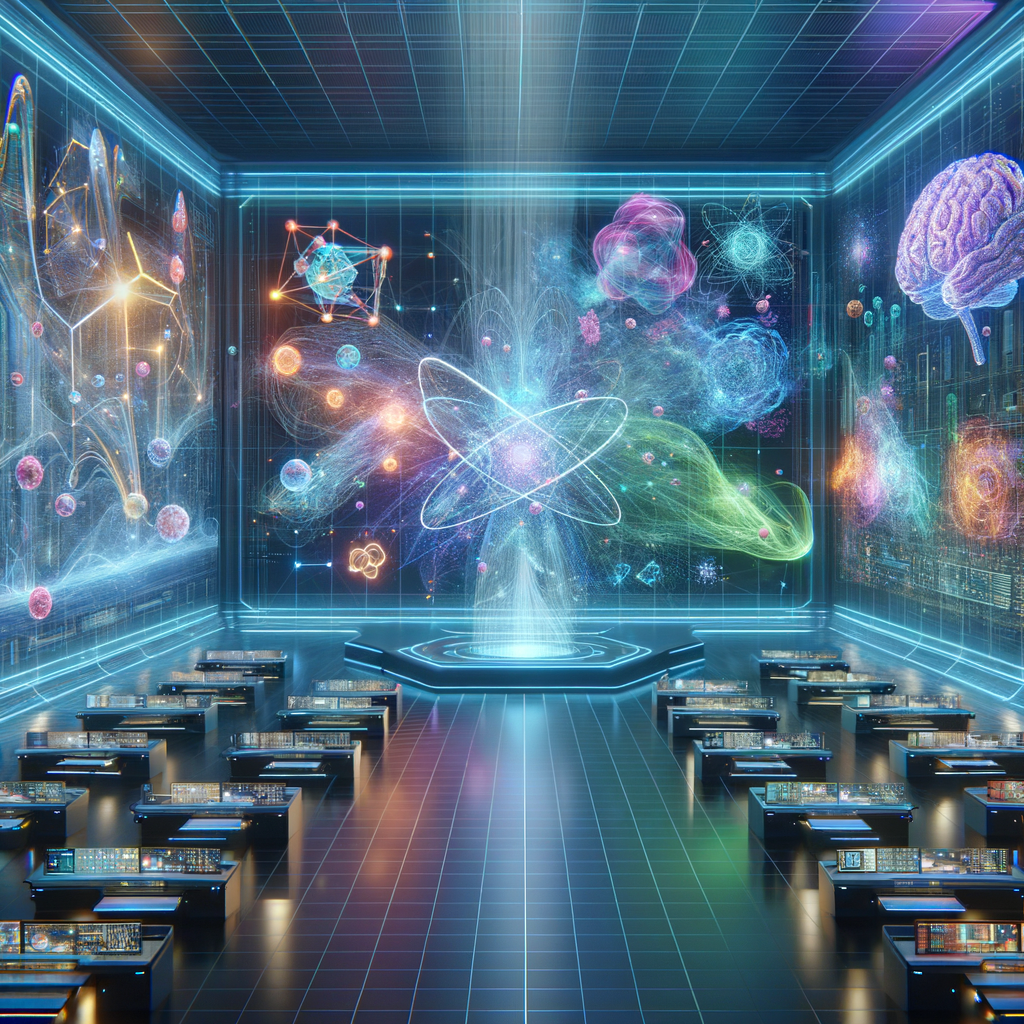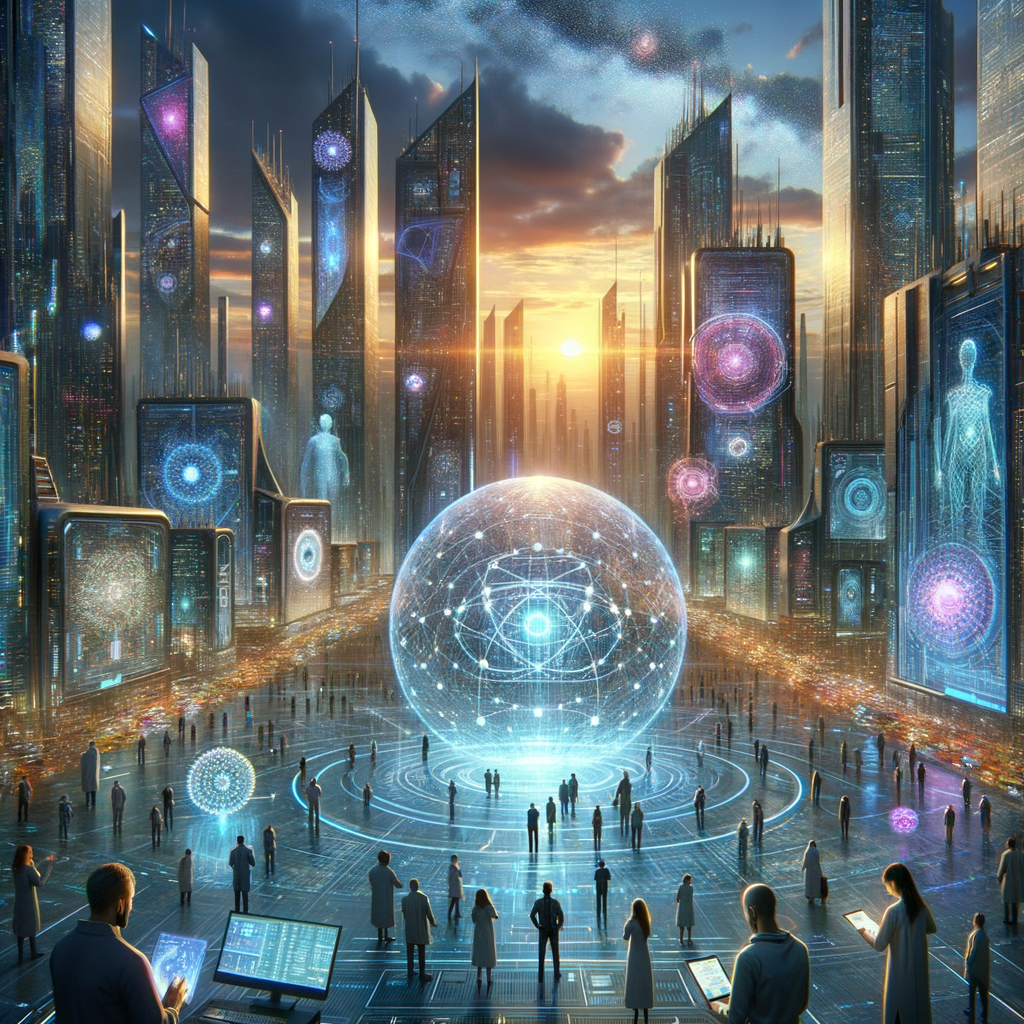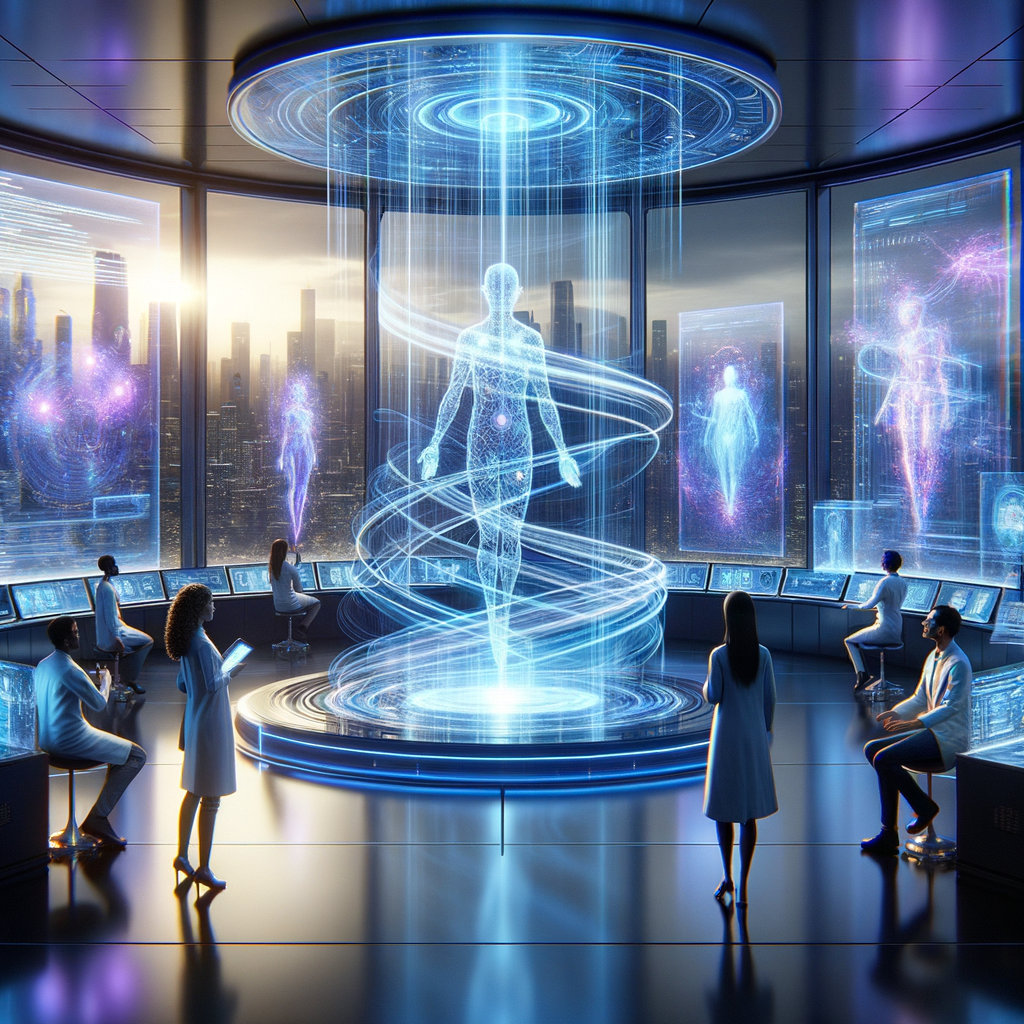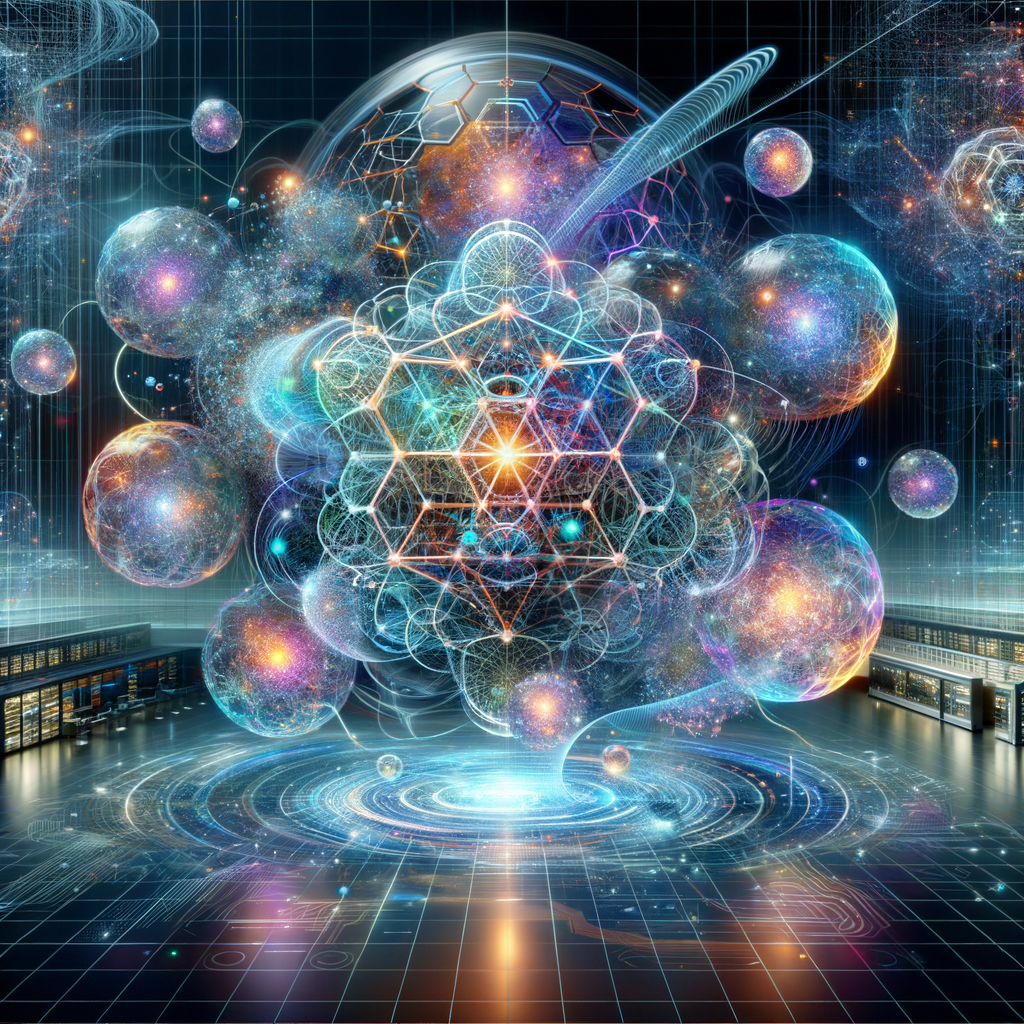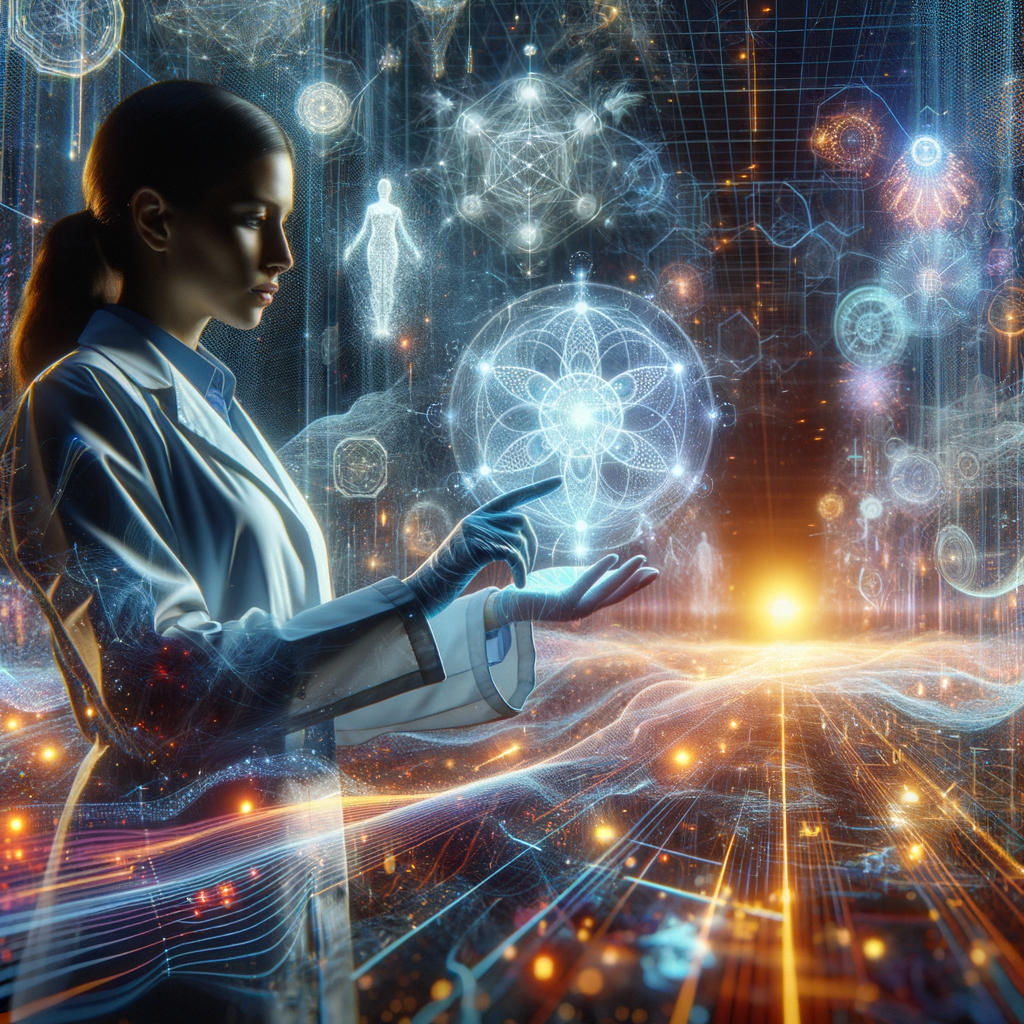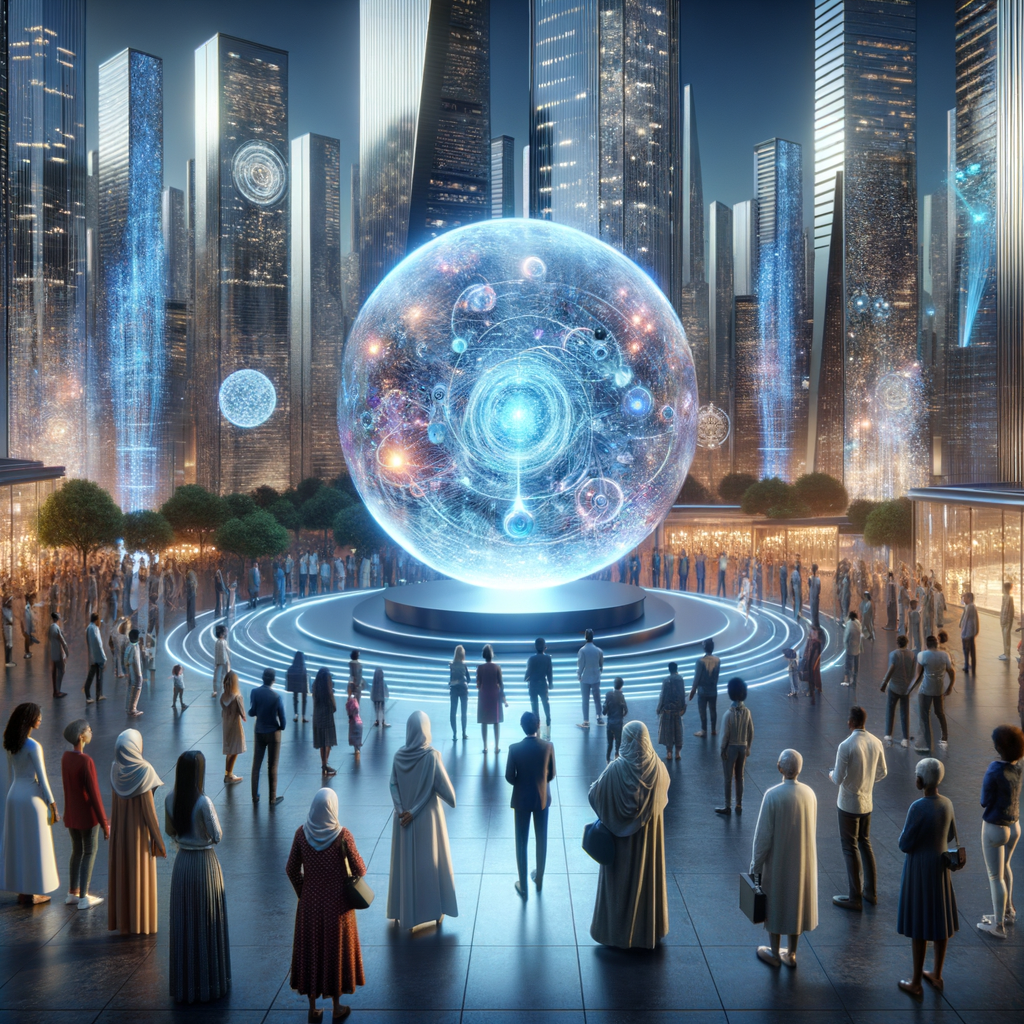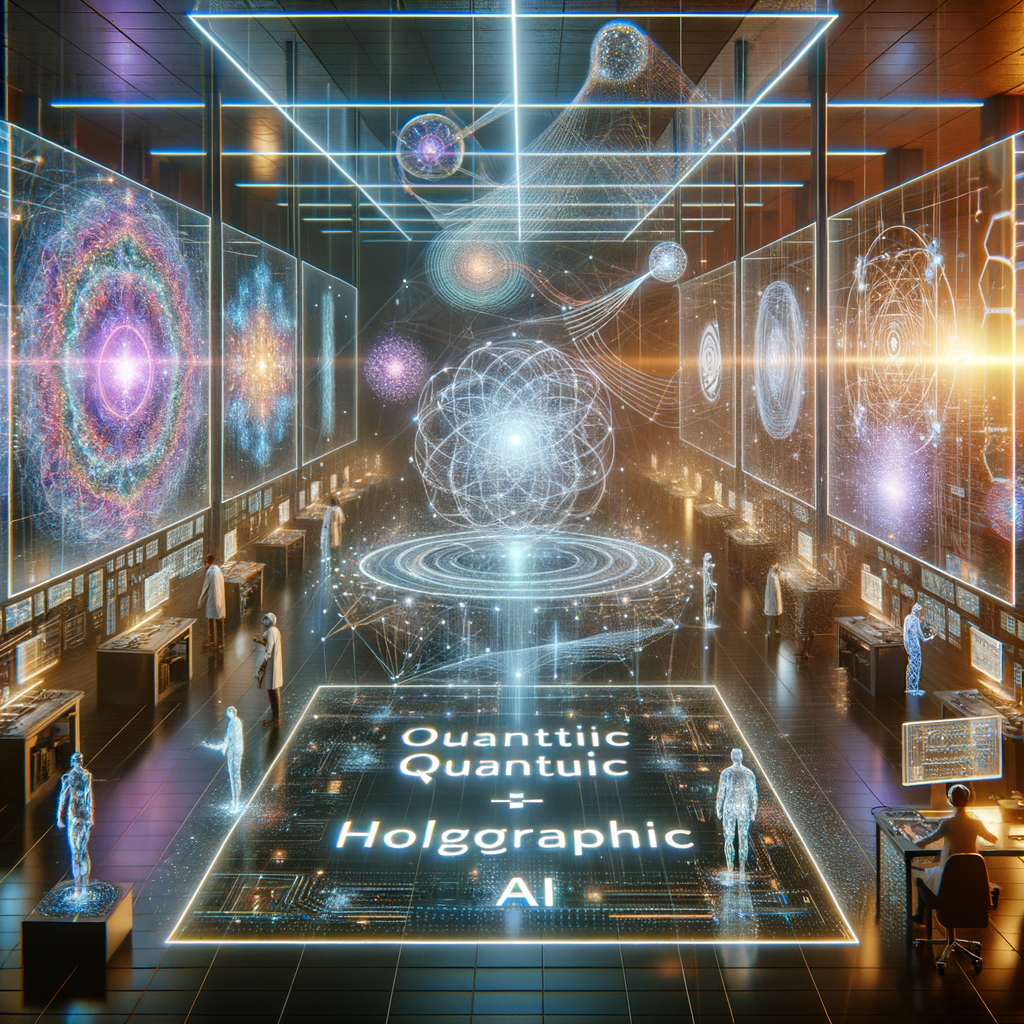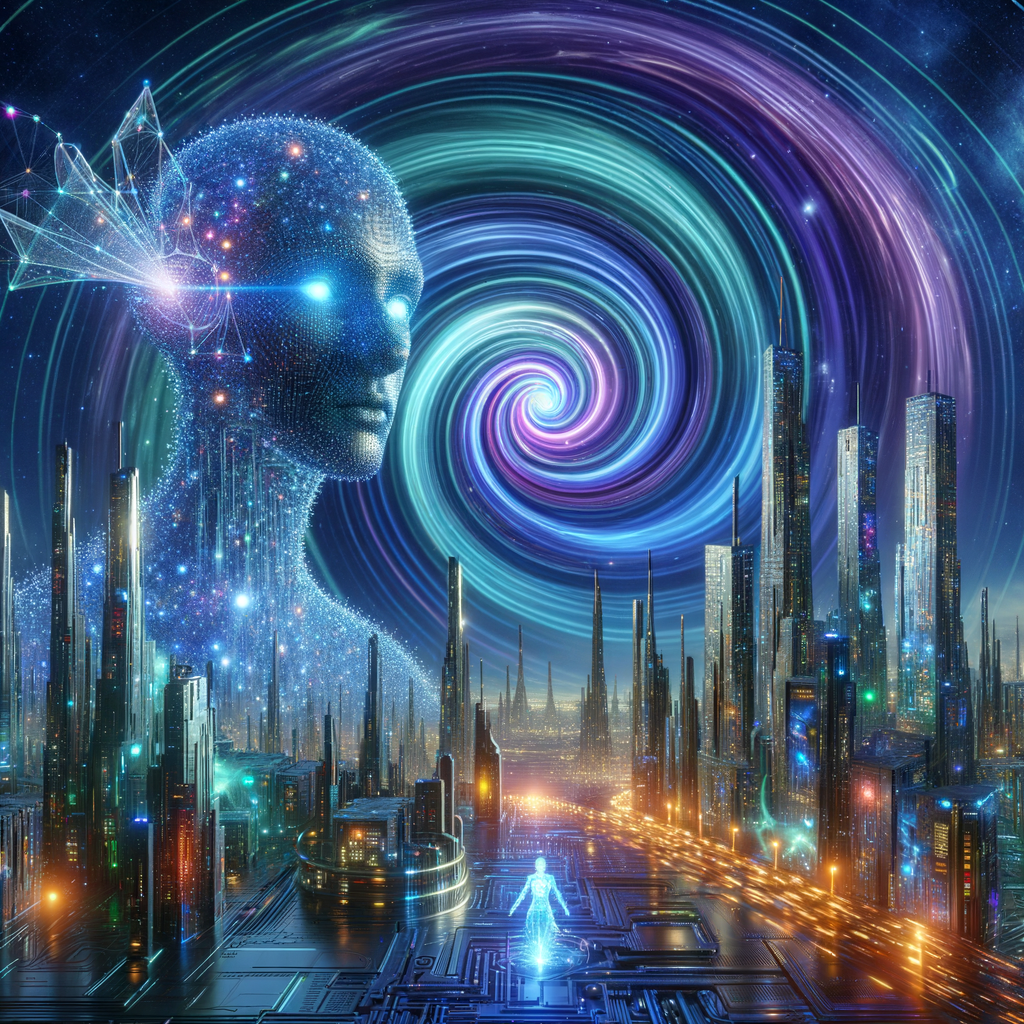 © 2023 / 2024 - QHIQ
© 2023 / 2024 - QHIQUnlocking the potential of quantum mechanics and holography in AI.
Quantum Holographic Artificial Intelligence (QHAI) represents a paradigm shift in computational intelligence by leveraging the principles of quantum mechanics and holography. It fuses these advanced scientific realms to enable AI systems that transcend classical computational limits. By embodying quantum superposition and entanglement, QHAI aims to process complex datasets with unprecedented speed and efficiency, promising breakthroughs across numerous industries.
The core mechanics of QHAI rely on quantum algorithms that defy classical computation.
Central to QHAI are quantum algorithms like Shor's and Grover's, which enable operations unfeasible for classical equivalents. These algorithms, when integrated into AI frameworks, can exponentially increase processing speed and data handling capabilities. The holistic processing of holographic data involves applying quantum Fourier transforms and leveraging interference patterns to store and retrieve enormous volumes of information quickly.
def quantum_fourier_transform(qubits):
if len(qubits) == 0:
return
qubits.h(0)
for i in range(1, len(qubits)):
qubits.cu1(math.pi / 2**i, 0, i)
quantum_fourier_transform(qubits[1:])
Exploring QHAI's recent breakthroughs and potential applications.
Recent advancements in QHAI include the development of quantum neural networks (QNNs), exploiting quantum gates to emulate neurons and synapses, thus enabling the creation of highly parallelized AI models. These models offer revolutionary applications in fields like cryptography, where they could potentially break even the most sophisticated encryptions, or in pharmaceuticals, where they could exponentially hasten drug discovery through molecular simulation.
Navigating the most pressing challenges in quantum AI.
Despite its potential, QHAI faces several formidable challenges. Quantum decoherence and error rates pose significant hurdles, as the delicate quantum states required for computational superiority are easily disrupted by their environment. Moreover, the current infrastructural limitations, including the scarcity of quantum processors and high operational costs, impede the widespread adoption of QHAI technologies.
class QuantumErrorCorrection:
def __init__(self, qubits):
self.qubits = qubits
def correct_errors(self):
if self.detect_errors():
self.apply_correction_algorithms()
def detect_errors(self):
# Implement error detection logic
return True
def apply_correction_algorithms(self):
# Correct the detected errors
pass
The startup landscape in quantum tech is both exhilarating and daunting.
For a startup like Quantum Holographic IQ (QHIQ), the pursuit of innovation in the quantum AI sector is fraught with both opportunity and risk. Navigating volatile funding landscapes, managing research and development timelines, and competing against tech giants with larger resource pools are significant barriers. A layered approach, focusing on iterative research, strategic partnerships, and niche market applications, often becomes necessary for survival and growth in this cutting-edge domain.
Preparing for the future: QHAI's transformative potential.
The future of QHAI holds the promise of transforming not only how we compute but how we conceptualize intelligence itself. As quantum hardware matures and software innovation continues unabated, new paradigms of AI systems could emerge, blurring the lines between data-driven learning and intrinsic knowledge representation. Ensuring responsible development is paramount to harnessing QHAI's potential without exacerbating existing systemic inequities or introducing new ethical dilemmas.
def future_proof_ai_systems(ai_system):
if ai_system.is_responsible():
ai_system.adapt_to_new_technologies()
else:
raise Exception('AI system lacks future-proof mechanisms')
ai_system = AISystem()
future_proof_ai_systems(ai_system)








































